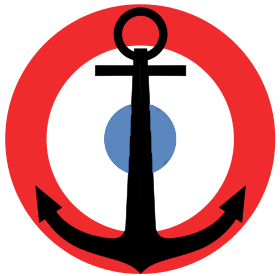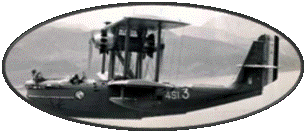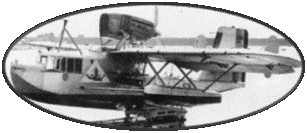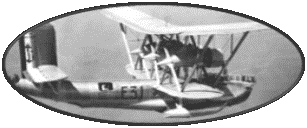 |
Site en Français
|
Reconnaissance
Aircrafts
Trainer
Aircrafts
Transport
and Links
Seaplanes
|
GOURDOU-LESEURRE GL-812
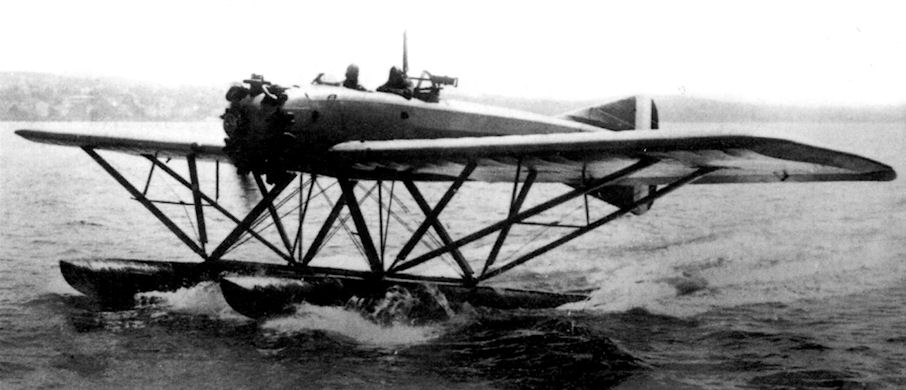
Technical
Specifications
|
Type
|
Three-seater observation
seaplane
|
Date first flight
|
November
29, 1933
|
|
Wingspan
|
16.00 m
|
Lenght
|
10.49 m
|
|
Height
|
3.86 m
|
Wing Area
|
41.00 m2
|
|
Empty Weight
|
1690 Kg
|
Max. Takeoff Weight
|
7124 Kg
|
|
Cruising Speed
|
158 km/h.
|
Maximum Speed
|
195 km/h
|
|
Climbing Speed
|
|
Service ceilling
|
5800 m
|
|
Range
|
560 kms
|
Crew
|
3
Men
|
|
Motorization
|
1 Radial
Gnôme & Rhône 9Ady of 420 Cv
|
|
Armament
|
1 machine-guns of
7.7mm on the engine hood
2 Vickers 7.7mm machine guns on a mobile station in the
rear post
150Kgs of bombs
|
96
aircrafts, all versions, were manufactured.
|
Version
|
Nber
of Ex
|
| GL- L-2 |
1
|
| GL L-3 |
6
|
| GL-810
HY |
24
|
| GL-811
HY |
20
|
| GL-812
HY |
29
|
| GL-813
HY |
13
|
| GL-820
HY |
1
|
| GL-821
HY Torpilleur |
1
|
| GL-821
O2 |
1
|
To date, out of the 96 aircraft
manufactured for Naval Aviation, 45 are listed in the list below:

In 1926, Gourdou-Leseurre,
based in Saint Maur des Fossés near Paris, studied and
built a monoplane seaplane equipped with wooden catamaran floats.
It is powered by a Gnome & Rhône Jupiter 9Aa, 9-cylinder
radial engine, air-cooled built under Bristol license. It delivers
380 hp and is equipped with a two-blade wooden propeller. The
aircraft is designated "L-2".
The fuselage consists of a welded tubular structure covered with
canvas.
The drift takes again
the drawing "Gourdou-Leseurre" and is implanted on
both sides of the fuselage, thus forming two triangles.
The low wings are wooden
covered with canvases and can be dismantled in 5 minutes.
Its weaponry consists of two Vickers machine guns of 7.7 mm
synchronized on the hood, and two other Vickers of 7.7mm mounted
on mobile watch and served by the gunner at the extreme post
rear. The aircraft is triplace: Pilot / Observer and gunner
are distributed along the fuselage in separate positions.
After a first flight on the
Seine, near his production site, he brilliantly performs his tests
at the CEPA and will, later, used for demonstrations in many countries.
The "L-2" will be reformed in 1928, but the conquered
Navy will command 6 other aircraft called "L-3".
These are very close to L-2. They are now powered by a Gnôme
& Rhône 9Ac of 420 Cv, and their structure has been reinforced
by steel profiles, to allow catapulting without risk.
Note that the first catapult with one of these aircrafts, in Saint-Nazaire,
will be ... without a pilot.
These 6 copies have confirmed the favorable opinion of the Navy
on the aircraft and an order of 24 copies is launched under the
designation GL-810 HY. These aircraft are intended for Observation
and Reconnaissance.
The engine is a Gnome and
Rhone 9 Ady, 420 hp. Changes from L-3 are minor. The floats are
lengthened by 69 centimeters and the drift is enlarged to improve
the stability. And curiously, the observer now occupies the back
seat, this does not facilitate the rear defense.
The hood armament is reduced to a Vickers machine gun of 7.7mm,
but the aircraft can carry now 2 bombs of 75kg. The first flight
takes place on September 23, 1930
This series was followed
in 1931 by another 20 copies called GL-811 HY, intended to be shipped
on the aircraft carrier: Commander Teste. The more advanced GL-811
HY boasts Radio equipment, folding wings, dual controls and a marine
rudder, mounted on one of the floats to promote maneuverability
at sea.
In 1933, appear the GL-812
HY. Ordered at 39 copies, they are equipped with a larger fin and
rounded shape. The wooden propeller is abandoned in favor of a metal
propeller, always two-bladed. The following GL-813 HY version will
be very close, and will bring only double-controls and folding wings.
13 copies will be made ..
From 1935, all the previous
versions, will be put back to the standard of the versions GL-812
or GL-813 HY
After the arrival of more
modern seaplanes such as the Loire 130, the units in service will
be gradually withdrawn from the service and will be used in easement
tasks. The last recorded flight of a GL-812 dates from March 1945
|
Version
|
Date of the 1st flight
|
Quick
description
|
| GL- L-2 |
September
23, 1930
|
Prototype
equipped with a Radial Gnôme & Rhône Jupiter
9Aa engine, 9 cylinders of 380 Cv. The armament consists of
2 Vickers of 7.7mm on hood and 2 others on mobile stand at
the rear station |
| GL L-3 |
|
Version
powered by a Gnôme & Rhone 9Ac of 420 Cv. The structure
is renored by steel rails to allow catapulting |
| GL-810
HY |
September
23, 1930
|
Version
powered by a Gnôme & Rhône 9Ady of 420 Cv.
Floats enlarged by 69cm. The observer is moved to the rear
station and the hood armament is reduced to a machine gun. |
| GL-811
HY |
March
18, 1932
|
With folding
wings, Radio equipment and dual-controls. Version intended
to be shipped on the seaplane carrier : "Commander Teste" |
| GL-812
HY |
November
29, 1933
|
Drift
version of rounded and enlarged shape. The wooden propeller
is replaced by a metal propeller, always two-bladed. |
| GL-813
HY |
October
22, 1934
|
Version
close to the GL-812, equipped with folding wings and double-control |
| GL-820
HY |
May
13, 1935
|
Four-seater
with rounded vertical AR plane, Hispano-Suiza 9Vb 730 hp engine,
1 7.5 mm Darne machine gun in the right wing and 2 rear mobile
Lewis, 300 kg of bombs. |
| GL-821
HY Torpilleur |
28
January 28, 1936
|
Four-seater
Motorized with a Gnome & Rhône 9Kfr 750 hp, 1 machine
gun Darne 7.5 mm in the right wing and 2 Lewis mobile back,
1 torpedo. |
| GL-821
O2 |
October
1937
|
It has
a closed cab and a three-blade propeller. He carries 300 kg
of bombs. |
Bibliography
Revue "ICARE
No230" :
Les
Avionneurs Charles Gourdou & Jean Leseurre

|
Photos
Album
|
